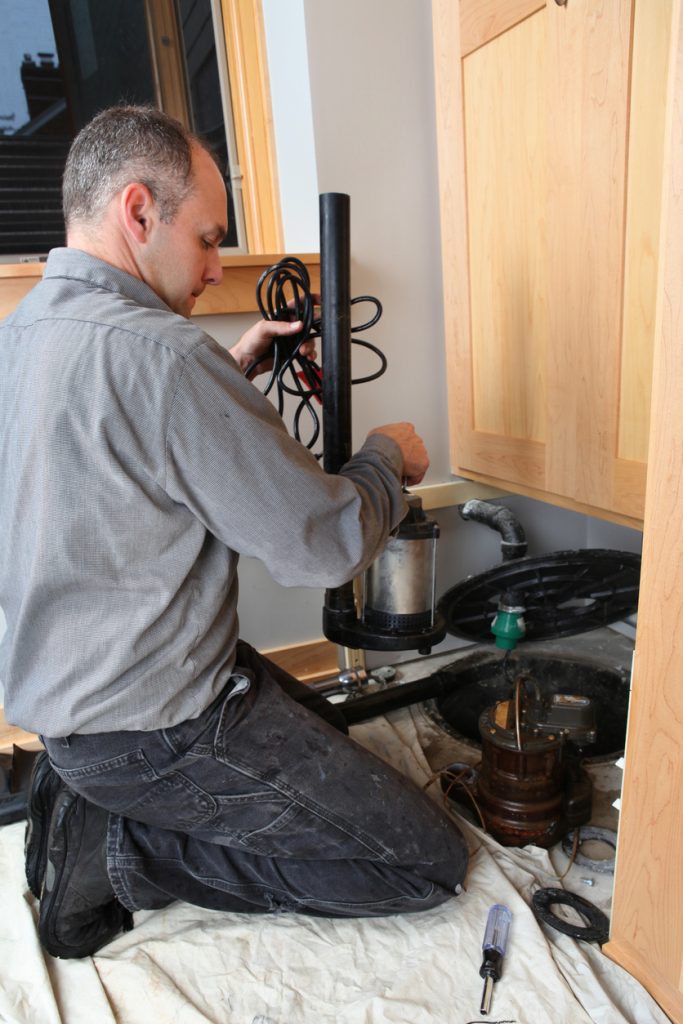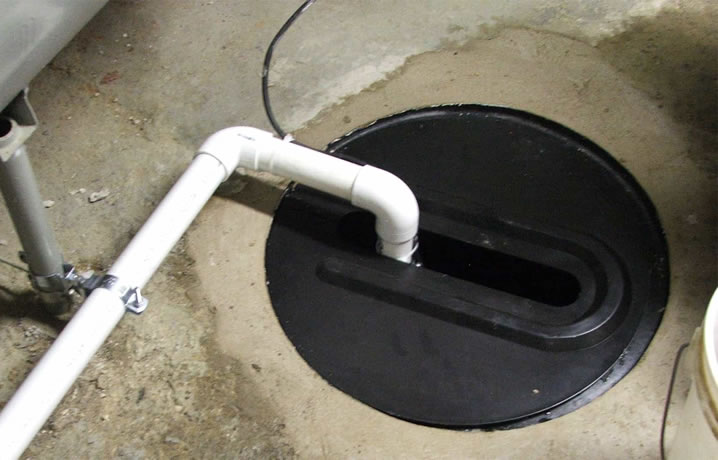Listed here down the page you can discover lots of exceptional resources regarding Cleaning & Maintenance Tips for Your Home's Sump Pump.

Sump pumps are crucial parts in numerous homes, specifically in areas vulnerable to flooding or extreme wetness. They help protect against water damage by successfully removing excess water from cellars or crawl spaces. However, like any other home appliance, sump pumps call for regular maintenance to guarantee they work effectively when required the most. Cleansing your sump pump is a crucial part of its upkeep, and understanding exactly how to do it properly can conserve you from costly repair services and possible disasters.
Introduction
Preserving a tidy sump pump is crucial for its proper performance and durability. Overlooking this crucial task can result in blockages, breakdowns, and inevitably, water damage to your building. Consequently, learning how to clean a sump pump is important for home owners that depend on these tools to maintain their cellars completely dry and protected.
Recognizing the Sump Pump
Prior to diving right into the cleaning process, it's important to have a basic understanding of exactly how a sump pump functions. Typically set up in a pit or container listed below the basement flooring, a sump pump includes several key elements, including a pump, a float button, and a discharge pipe. When water accumulates in the pit, the float switch activates the pump, which after that pumps the water out via the discharge pipeline, far from the building's foundation.
Indications of a Dirty Sump Pump
Understanding when your sump pump needs cleaning is important for protecting against potential malfunctions. Some common indications that suggest a filthy sump pump consist of weird sounds throughout operation, reduced water circulation, and noticeable particles in the pit. If you discover any of these signs, it's essential to clean your sump pump promptly to avoid any kind of more concerns.
Getting ready for Cleaning
Prior to you begin cleaning your sump pump, it's vital to take some security preventative measures. Start by shutting down the power to the pump to prevent any type of electrical accidents. In addition, put on proper protective equipment, such as handwear covers and safety glasses, to shield on your own from dirt, particles, and potential virus.
Detailed Overview to Cleansing a Sump Pump
Shutting Off the Power
Begin by separating the power supply to the sump pump to stop any kind of mishaps while cleaning.
Removing Particles and Dirt
Utilize a bucket or an inside story to get rid of any type of noticeable debris, dirt, or debris from the sump pit. Dispose of the debris effectively to prevent it from blocking the pump or the discharge pipeline.
Cleaning the Pump and Float Change
As soon as the pit is free from particles, thoroughly get rid of the pump from the pit. Inspect the pump and the float switch for any type of indications of damages or wear. Use a soft brush or fabric to clean up the surface areas and get rid of any built up gunk.
Purging the System
After cleansing the pump and float button, purge the sump pit with tidy water to remove any continuing to be dirt or sediment. This will assist make sure that the pump operates efficiently and efficiently.
Looking For Correct Performance
Prior to reinstalling the pump, carry out a quick test to make certain that the float button turns on the pump appropriately. Put some water right into the sump pit and observe the pump's procedure. If every little thing is working properly, you can reassemble the pump and reconnect the power supply.
Maintenance Tips to Maintain Your Sump Pump Clean
Along with routine cleansing, there are numerous maintenance pointers you can comply with to keep your sump pump in ideal condition:
- Routine Examination: Check your sump pump on a regular basis for any indications of wear, damages, or blockages.
- Maintaining the Surrounding Area Clean: Make Certain that the area around the sump pit is without debris, dirt, and obstructions.
- Examining the Pump Regularly: Check your sump pump occasionally by pouring water right into the pit and observing its procedure. This will aid you determine any possible problems before they rise.
Final thought
Cleaning your sump pump is a crucial facet of its maintenance and ensures that it runs effectively when you require it the most. By adhering to the steps outlined in this guide and incorporating routine maintenance into your routine, you can expand the lifespan of your sump pump and shield your home from water damage.
6 STEPS ON HOW TO CLEAN A SUMP PUMP PROPERLY
UNDERSTANDING SUMP PUMPS
Your sump pump plays a crucial role in protecting your home by managing and removing excess water. It primarily functions as a “shield”, guarding your basement against the damaging effects of water accumulation. The pump is housed in a sump pit in the lowest part of your basement, and its job is to pump out any water that collects there.
During heavy rainfalls or when snow melts rapidly, water can infiltrate your basement, posing potential risks like flooding, structural damage, and harmful mold growth. Here, the sump pump springs into action, pumping out the intruding water and directing it away from your home.
SAFETY FIRST
Before cleaning, remember to prioritize safety. Disconnect the sump pump from the power source to prevent any accidental electric shocks. Also, wear sturdy gloves to protect your hands from any sharp or dirty components within the pump.
REMOVE THE SUMP PUMP
After ensuring your safety, the next step is to remove the sump pump from its pit. Doing this might require careful maneuvering as you don’t want to damage any pump components. Once removed, clean the sump pit to remove any accumulated debris or sludge.
INSPECT THE PUMP
Inspect the pump for any visible signs of wear or damage. Check the power cord, float switch, and impeller housing. If any components look worn out or damaged, consider replacing them to ensure optimal performance.
CLEAN THE PUMP
Thoroughly clean the pump with warm, soapy water. Make sure to rid it of any dirt, gravel, or other debris that might impede its performance. You can use a toothbrush to clean the small, hard-to-reach parts of the pump.
REINSTALL THE SUMP PUMP
- Reinstall the pump into the sump pit
- Make sure it’s positioned correctly to remove the water effectively
- Once it’s back in place, reconnect it to the power source
TEST THE PUMP
Finally, pour some water into the pit to ensure the pump works correctly. It should start automatically and begin pumping out the water; if it doesn’t, check the power source and the positioning of the pump.
Remember, while cleaning your sump pump is an essential part of home maintenance, hiring a professional plumber for a thorough inspection and cleaning at least once a year is also important. This will ensure that your pump is in optimal condition, ready to protect your home from potential water damage.
BEST PRACTICES FOR CLEANING SUMP PUMP DISCHARGE PIPES
- Regular Inspection: Regularly inspect your discharge pipes, especially during heavy rainfall or snowmelt periods. Look for any signs of blockage or damage. Early detection of problems can prevent serious issues down the line.
- Periodic Cleaning: Over time, sediment and debris can accumulate in the discharge pipes, impeding the flow of water. Regular cleaning helps keep the pipes clear and functioning efficiently. You can use a high-pressure water jet to effectively clean the pipes.
- Insulation During Winter: In colder climates, discharge pipes can freeze, blocking the outflow of water. Protect your discharge pipes from freezing temperatures by insulating them with foam pipe insulation. This will ensure the sump pump can continue to discharge water even in freezing conditions.
- Proper Positioning: The discharge pipe should be positioned to direct water away from your home’s foundation. Improper positioning can lead to water seeping back into the basement. Ensure the pipe is long enough and angled correctly.
- Installation of a Check Valve: A check valve prevents water from flowing back into your sump pit after the pump has pushed it out. Installing a check valve helps maintain the efficiency of your sump pump and reduces the risk of flooding.
- Minimize Pipe Turns: Every curve or turn in the discharge pipe can decrease the efficiency of water flow. By minimizing turns and bends in your discharge pipe, you can increase the efficiency of your sump pump.
https://www.fullspeedplumbing.com/how-to-clean-a-sump-pump-properly9999/

I have been very occupied with Keep Your Sump Pump Clean, It'll Keep You Dry and I hope you enjoyed reading the new article. Those who appreciated our article kindly consider to share it. Thanks for being here. Come back soon.
Click Here
Comments on “Handy Tips for Caring for a Sump Pump”